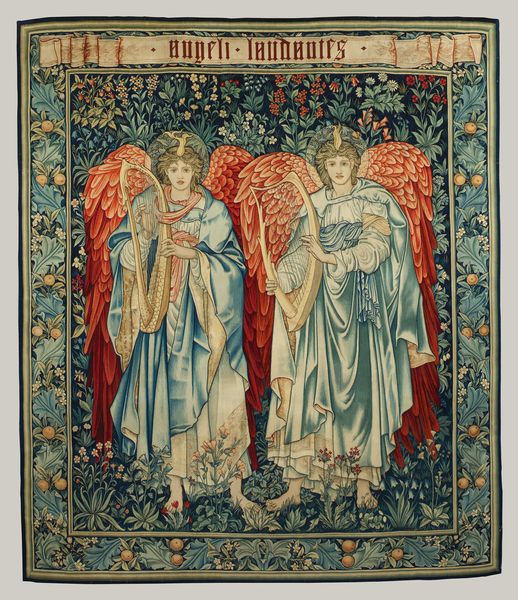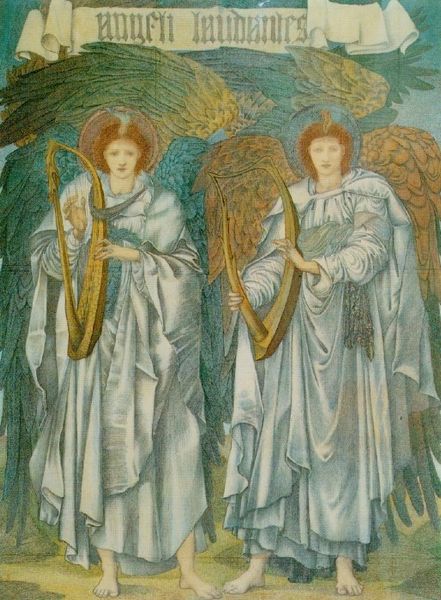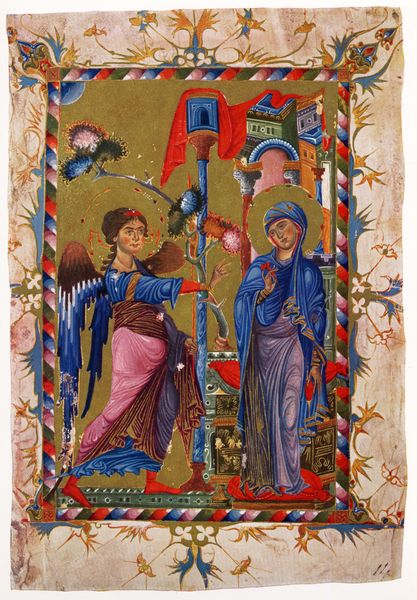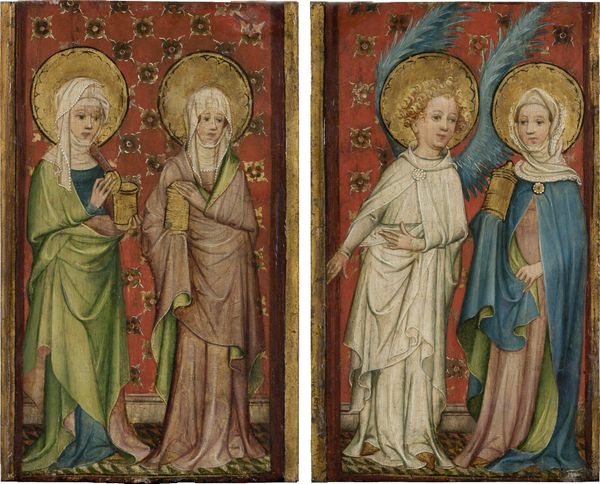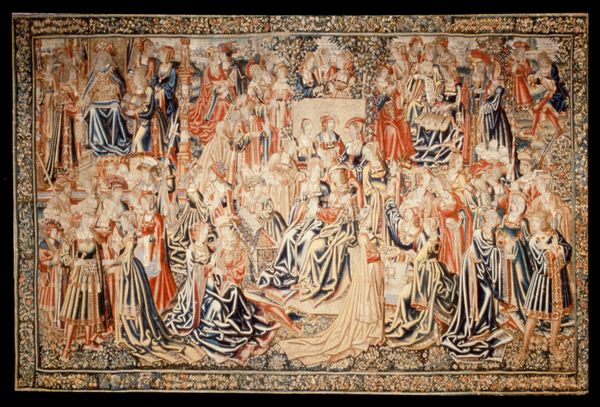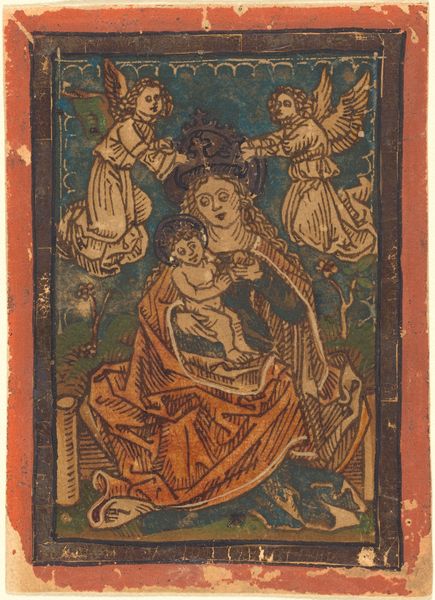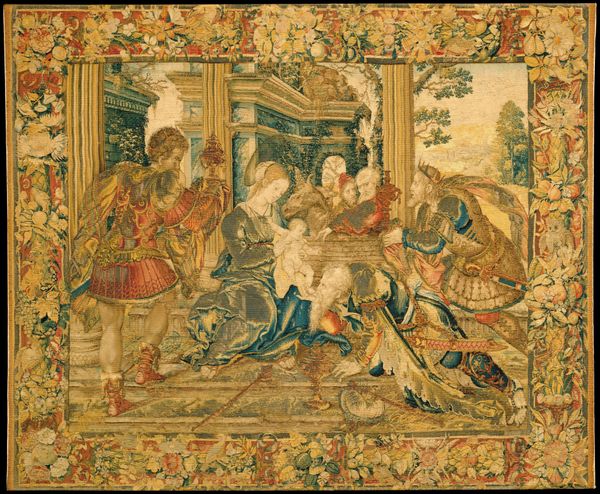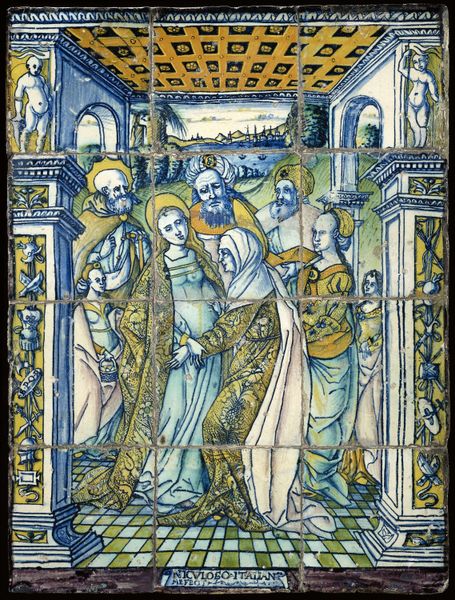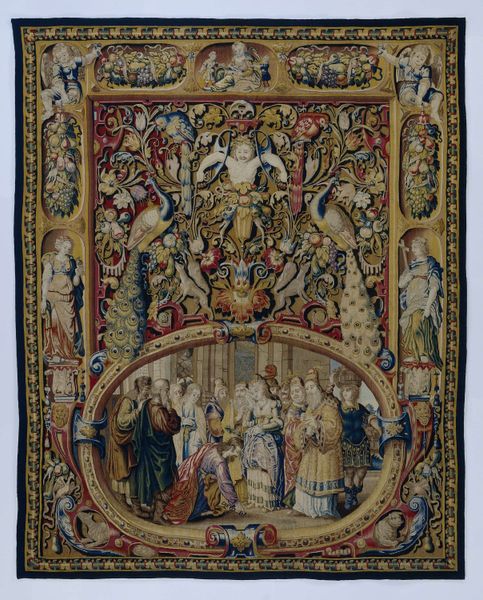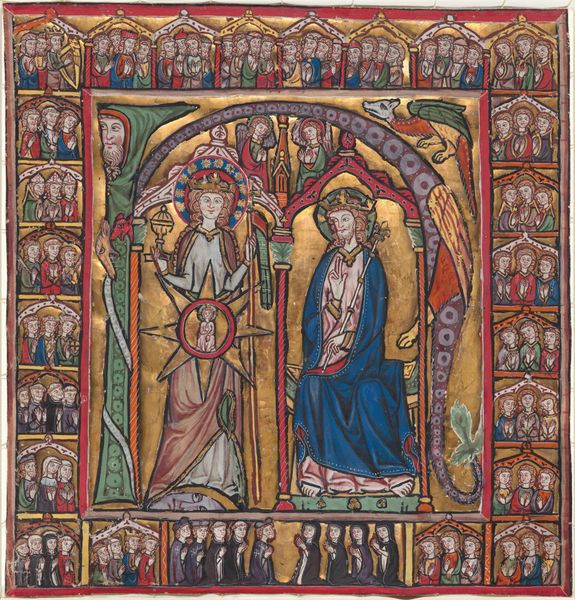
weaving, textile
#
arts-&-crafts-movement
#
sculpture
#
weaving
#
landscape
#
stain glass
#
textile
#
figuration
#
christianity
#
symbolism
#
decorative-art
#
decorative art
#
angel
Copyright: Public domain
Edward Burne-Jones designed this tapestry, *Angeli Laudantes,* meaning ‘Praising Angels’ in Latin, in the late 19th century for Morris & Co. Burne-Jones was a key figure in the Arts and Crafts movement, which reacted against industrialisation and mass production by reviving traditional craftsmanship. This tapestry reflects that ethos, celebrating the skill of the weaver and the beauty of natural materials. But it also tapped into a yearning for spiritual values within an increasingly secular society. The idealised figures and serene composition, reminiscent of early Renaissance art, offer an escape from the gritty realities of Victorian Britain. As art historians, we can research the social context in which this tapestry was created, by exploring the writings of John Ruskin and William Morris, key intellectual figures within the Arts and Crafts movement. We can further understand the cultural references that underpin it, such as the Pre-Raphaelite Brotherhood’s idealised and romantic style. Understanding the tapestry's historical context, and the institutions in which it was produced, allows us to gain a deeper understanding of its meaning and significance.
Comments
No comments
Be the first to comment and join the conversation on the ultimate creative platform.

